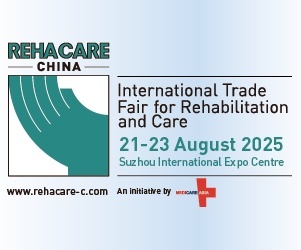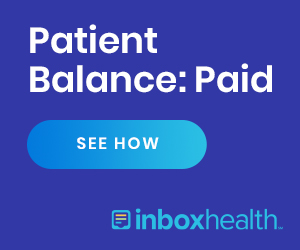The pandemic impacted healthcare workforces in ways unlike any other. Many employees either experienced sickness, fear or were furloughed as a close COVID-19-contact. Some employees moved on to roles that were either easier, safer or took a break from work altogether – referred to as ‘The Great Resignation’ or ‘The Great Retirement’. Others re-evaluated their life priorities and sought further work-life balance i.e. ‘The Great Re-evaluation. International border restrictions and quarantine requirements that also prevented workers from filling roles internationally.
Loss of staff impacts the quality of patient care, as well as a potential loss of revenue to health systems from reduced service capacity. Organizations faced with workforce shortages have 5 strategic decisions:
- Shutdown services or postpone growth in services or
- Intensify recruitment efforts.
- Improve staff retention.
- Realign staffing and skills to demand (capacity optimisation)
- Digitize and automate processes.
Research has shown that leaders and managers in executive positions or human resources, finance and operational leadership roles have difficulty executing these decisions due to constrained time, resources and analytics capability, disparate datasets across multiple systems and limited experience in workforce planning. To help leaders address these complexities, we identified 8 steps to systematically address and manage workforce shortages:
8 STEP WORKFORCE STRATEGIES
1 Align your ‘workforce leadership’ team
2 Define and Quantify the ACTUAL problem
3 Analyze your specific key drivers
4 Workforce Planning & Prioritization
5 Generate & Implement Action Plans and Solutions
6 Scenario modeling and optimisation (optional)
7 Monitor and evaluate workforce performance
8 Continuously adapt & improve strategies
- Align your ‘workforce leadership’ team
The first step is to gather relevant team members and inform them of the intention for improvement and the approach for doing so. It sets up the culture of team consultation and begins a shared journey within the team of addressing workforce issues internally and externally. Your workforce leadership team may include CEO or Managing Director, shareholders, Chief Financial Officer (CFO), Chief Operating Officer (COO), Chief HR Officer, People Analyst, supplier representatives and even patient representatives.
- Define and Quantify the REAL problem
Workforce shortages are actually a multifactorial problem that is a composite of several sub-problems. Many organizations use the turnover data as one of the main measures for assessing effectiveness of strategies to retain employees, others measure the vacancy rate or time to fill roles. Turnover has tangible losses incurred from:
- Cost to hire replacement staff e.g. recruiter fees and costs
- Cost of temporary staff to cover a position
- Cost of training a new hire
- Cost of lost productivity
- Loss of revenue
These costs are often ‘hidden costs’, however they have a significant impact on operations.
- Analyze your specific key drivers
It is important to understand what is driving the shortage, before attempting to propose solutions. The assessment of drivers can be done through a number of mechanisms including workshops with key executives, managers and front-line teams, employee experience surveys, exit interviews or an amalgamation of internal and external research specific to the industry, geography and demographic of your specific workforce. Following a driver analysis to determine the root causes behind slow recruitment, high voluntary turnover or lowered productivity, the next step is to prioritize them. Determine your specific highest priority root causes of your workforce shortage and which employee segments they occur in, as this is critical to further informing the high priority actions and solutions.
- Workforce Planning & Prioritization
A common prioritization grid to help to plot drivers and root causes is the Eisenhower matrix, whilst another method of issue prioritization would be to use a Risk, Cost, Value, Effort (RCVE) matrix. Once completed, it is crucial to list and describe high priority issues and rank them by importance and urgency, at the very least.
- Generate & Implement Action Plans and Solutions
In every organization, there are existing actions, programs and incentives to attract and retain staff. Nonetheless, these solutions may not all be visibly captured, nor do they often have appropriate targets, benefits and quantifiable financial outcomes attached to them. Matching your key drivers to solutions and programs to comprehensively address talent attraction and retention helps optimize scarce efforts and resources. Appropriate levels of budgets and resources should also be assigned to obtain the necessary ROI from these actions.
- Scenario modeling and optimisation (optional)
For more medium to large organizations at higher levels of data maturity, modeling and forecasting of these various interventions are an optional exercise to map out the most optimal portfolio of solutions that have an impact on staffing turnover. This is more likely to be supportive of executive decision-making more than subjective brainstorming. AI tools and algorithms are being developed to address such steps.
- Monitor and evaluate workforce performance
Routine performance evaluation is a characteristic trait of the highest performing leaders and teams in organizations. Important considerations include introducing real-time dashboards and measurement. It is also important to correlate these metrics with lag indicators such as the financial metrics of revenue, care performance, workforce performance and wages efficiency. Industry benchmarking of wages is also helpful to determine if pay rates are competitive.
- Continuously adapt & improve strategies
It would be encouraged that workforce governance by HR leadership/teams set this as a standing agenda item in monthly management meetings, with data-driven evidence. It would also be recommended that issues are discussed in daily team huddles or weekly meetings, in order to manage and adapt operational and tactical issues in near real-time as possible.
Conclusions
In order to have a competitive advantage over industry peers in the war for talent, organizations should invest in developing short, medium and long term capability in relation to workforce planning and analytics. This is particularly the case as trends indicate a tight labor market in future years. As such, optimizing systems and enabling leaders with these decision-making skills is core to organizational growth, care quality and profitability in years to come.


















